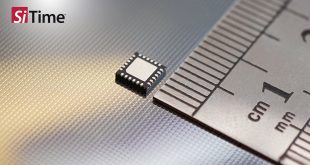 Following Samsung’s introduction of the first flexible organic light-emitting diode (OLED) products earlier this year, demand for these elastic displays is expected to grow by more than a factor of four next year, with sales reaching almost $100 million in 2014. Global market revenue for flexible OLEDs is forecast to rise to $94.8 million in 2014, up from $21.9 million in 2013, according to a new report from IHS.
Following Samsung’s introduction of the first flexible organic light-emitting diode (OLED) products earlier this year, demand for these elastic displays is expected to grow by more than a factor of four next year, with sales reaching almost $100 million in 2014. Global market revenue for flexible OLEDs is forecast to rise to $94.8 million in 2014, up from $21.9 million in 2013, according to a new report from IHS.
If the projected growth next year is realised then it will equate to a 334 percent expansion from this year, paving the way for much larger sales in the future.
OLEDs represent a major segment of the larger flexible display market, which in the coming years will also include liquid-crystal display (LCD) and electronic paper (e-paper) technology.
“The buzz about flexible displays has been growing louder, ever since Samsung Display demonstrated its Youm line of bendable OLED products at the Consumer Electronics Show in January,” said Vinita Jakhanwal, director of mobile and emerging displays and technology at IHS. “Samsung is expected to begin shipping its first flexible OLED display in the second half of this year.”
Samsung’s initial product is likely to be a first-generation flexible display, employing a non-glass substrate that yields superior thinness and unbreakable ruggedness. However, such displays are flat and cannot be bent or rolled. Flexible displays are expected to eventually evolve into rollable and foldable OLED screens that are likely to be introduced after 2016.
Even so, it is too early for flexible OLED panels to fully replace conventional OLED screens. This is because the plastic substrate, thin-film encapsulation and other related technologies for flexible OLED remain immature for immediate application. Moreover, manufacturing processes are still being tested.
“A wide range of complementary technologies are under development to accelerate the advancement of flexible displays,” Jakhanwal said. “The success of the flexible OLED market will ultimately be determined by the maturity of the materials and manufacturing processes that will enable large-volume production at reasonable costs.”
 CIE Components in Electronics
CIE Components in Electronics



